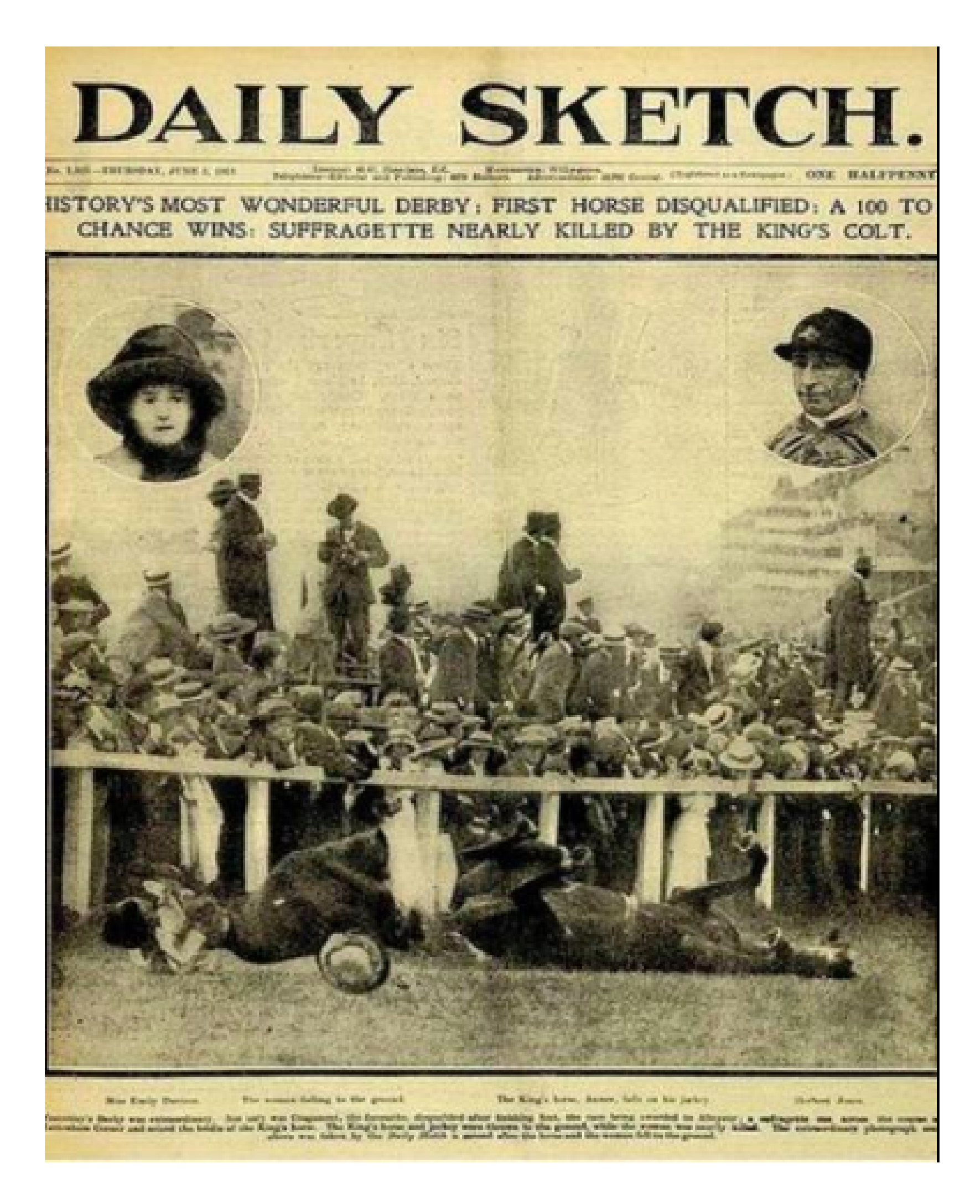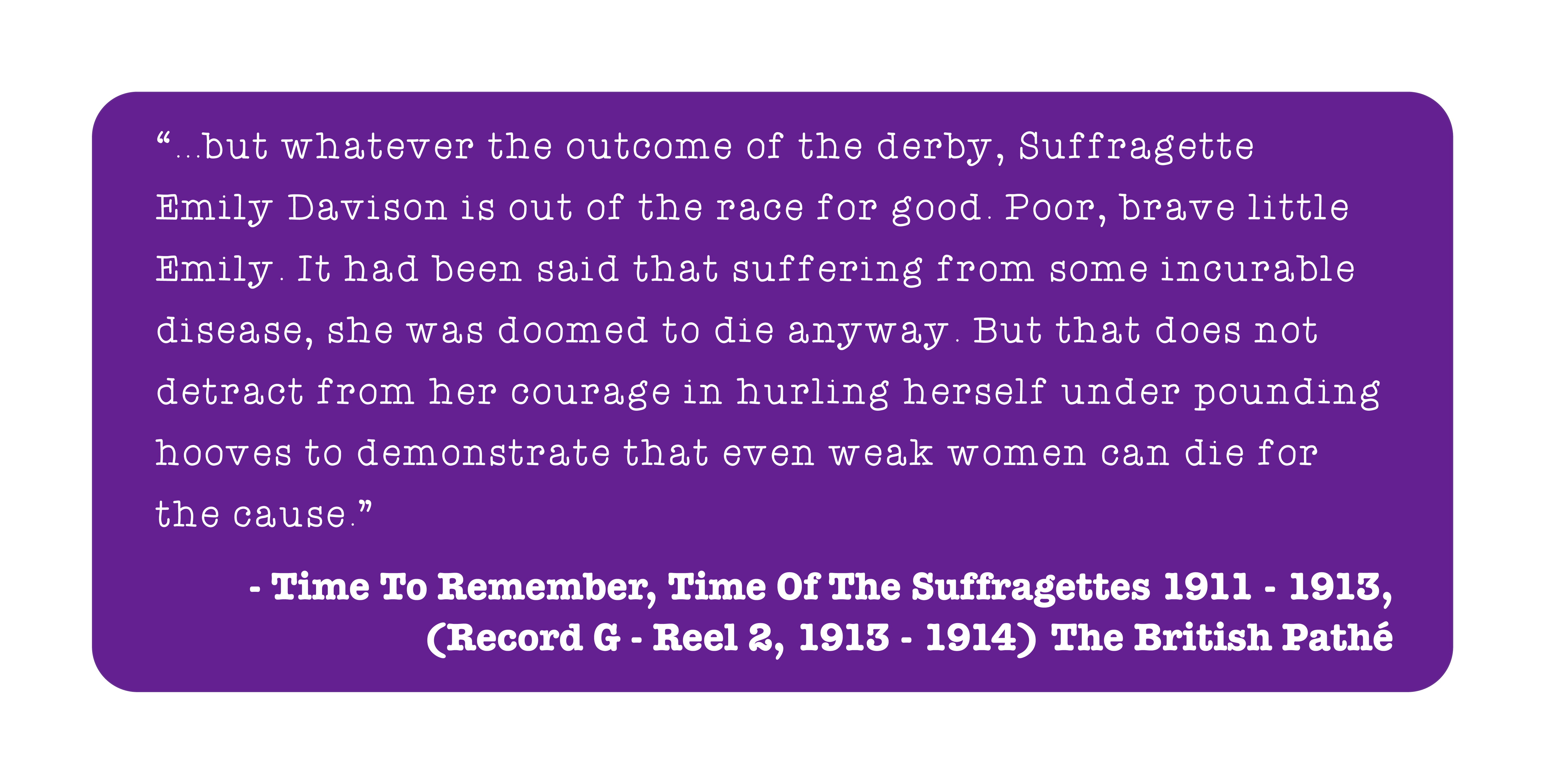(1872-1932)
Suffragette




(1872-1932)
Suffragette
Emily Wilding Davison was a bright student who attended classes at Holloway College and Oxford University, but could not obtain an official degree because women were prohibited from doing so at the time. She later became a teacher but spent her free time contributing to the suffrage movement.

Emily Wilding Davison, 1913, The Museum of London
In 1906, Davison joined the WSPU.
In 1909, she quit teaching and became fully dedicated to the WSPU and women's suffrage.
She spent a month in Manchester's Strangeway Prison and attempted hunger strike in protest. When she barricaded herself in her cell, the guards, frustrated, flooded her cell with water.
In 1912, Davison spent 6 months in Holloway Prison.

On June 4, 1913, Emily Wilding Davison attended the 1913 Epsom Derby with the intent to make a great sacrifice which would advance the Suffragette Movement. With two Suffragette flags in hand, she ducked under the railing and walked into the path of King George V's horse. She was struck in the head by the horse in front of thousands of people, including King George and Queen Mary.
WARNING: Some may find images upsetting.
Suffragette Emily Davison knocked down by King's Horse at Epsom, 1913, The Guardian
Davison died four days later, on June 8, 1913. Many newspaper critics criticized her behavior, calling it the "act of a madwoman". However, Suffragette media claimed that she was a brave martyr.
The Votes For Women campaign turned out in hundreds for her funeral procession. On her gravestone was inscribed: 'Deeds, Not Words'.

“HISTORY'S MOST WONDERFUL DERBY - FIRST HORSE DISQUALIFIED: A 100 to 1 Chance Wins: Suffragette Nearly Killed”, July 5, 1913, The Daily Sketch
